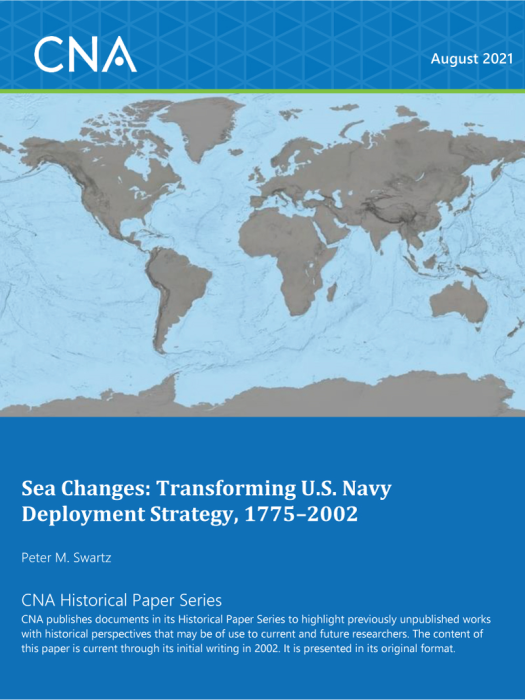The questions
The Navy often asks CNA for insights regarding future force deployment, force employment, and staff sizing for the Navy's operating forces. Recent examples include CINCPACFLT's 1996 requests for analytical assistance in determining future numbered fleet staff requirements and the nature of naval componency.
One place to look to gain such insights is past experience; i.e., Where has the Fleet been in the past? How has it been organized?
What has it done? Examining past experience cannot provide solutions to current and future problems by itself. It can, however, contribute to those solutions by:
- Illustrating the range of possible solutions
- Providing lessons learned
- Dispelling myths and false claims allegedly based on history
CNA therefore has sought to determine just what the past experience of the Navy has been, with regard to fleet deployments and operations, and to draw insights from the data assembled.
Scoping the problem
This has not been as easy as CNA originally believed it would be. The operational and deployment record of the fleet has not been neatly compiled in one accessible data base. Rather, it is hidden within both primary sources (e.g., Reports of the Secretary of the Navy and official fleet histories) and secondary sources (e.g., official public histories and scholarly and popular histories of the Navy and its elements). Naval writers, both official and non-official, are normally interested in discerning and analyzing concepts, policy, plans, administration, strategy, technology, or tactics - either alone or in combination. Actual deployment s of the fleet and the operational level of naval warfare is either buried and inter-mixed with these other elements, or ignored.
Download reportCNA Historical Paper Series
CNA publishes documents in its Historical Paper Series to highlight previously unpublished works with historical perspectives that may be of use to current and future researchers. The content of this paper is current through its initial writing in 1996. It is presented in its original format.
Approved for public release.
Details
- Pages: 404
- Document Number: DIM-2020-U-022390-1Rev
- Publication Date: 8/6/2021
